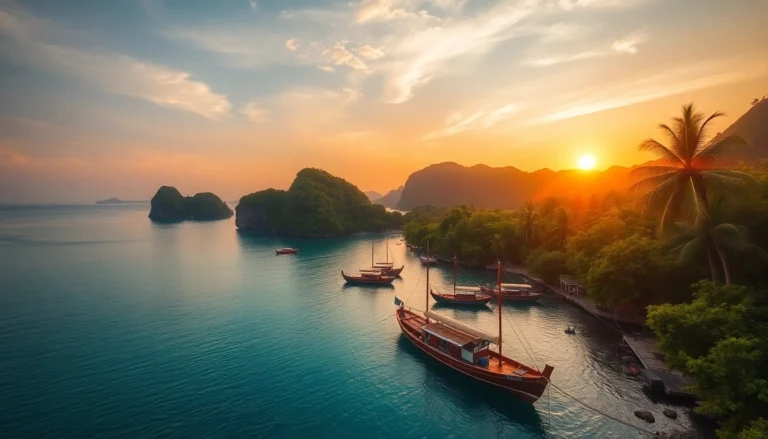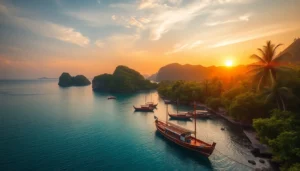Indonesia is renowned for its breathtaking landscapes, diverse ecosystems, and rich cultural heritage. Among the myriad outdoor activities available, hike enthusiasts find a paradise waiting to be explored. Whether you’re a seasoned trekker or a casual nature lover, embarking on a hike through Indonesia’s stunning terrains offers not only physical challenges but also profound cultural and natural insights. This comprehensive guide aims to inspire and equip you with everything you need to understand, plan, execute, and share unforgettable hiking experiences in Indonesia, especially focusing on the popular and diverse trails of Lombok and beyond.
Understanding Hiking and Its Benefits in Indonesia
Defining a Hike: Long Walks in Nature
At its core, a hike is a sustained walk, traversing trails or footpaths often set in natural settings. In Indonesia, hiking typically involves navigating terrains such as mountains, forests, rice terraces, and coastal trails, offering a unique blend of adventure and serenity. Unlike urban walks, hikes in Indonesia are distinguished by their varying degrees of difficulty, from gentle strolls suitable for families to challenging alpine ascents for experienced trekkers. The essence of hiking here isn’t merely about covering distance; it’s about immersing oneself in the mesmerizing landscapes, observing local flora and fauna, and experiencing the cultural tapestry of indigenous communities.
According to Wikipedia, a hike is primarily a vigorous walk often on trails or footpaths, historically developed as a leisure activity in Europe but now globally embraced, especially in Indonesia’s expansive and varied terrains. From the terraced hillsides of Bali to the volcanic peaks of Java and the lush rainforests of Sumatra, Indonesia’s trails offer diverse experiences that continually attract hikers from around the world.
Health and Wellness Advantages of Hiking
Hiking is a holistic exercise promoting both physical and mental well-being. Physically, it improves cardiovascular health, builds muscular strength, enhances endurance, and aids in weight management. The uneven terrains challenge stabilizer muscles, improving balance and coordination. Mentally, hiking acts as a natural stress reliever, fostering mindfulness and mental clarity. Being surrounded by nature reduces cortisol levels, alleviating anxiety and depression.
Research indicates that regular hikes can reduce the risk of chronic diseases, improve bone density, and boost immune function. In the context of Indonesia, where wellness tourism is gaining momentum, hiking combines fitness with cultural immersion, making it a holistic health regimen for travelers seeking meaningful outdoor experiences.
Cultural and Natural Highlights of Indonesian Trails
Indonesia’s hiking trails are more than pathways—they are gateways to cultural riches and ecological wonders. Trails around Mount Rinjani in Lombok lead hikers through traditional Sasak villages, offering insights into local architecture, rituals, and lifestyles. The Baliem Valley Trek in Papua showcases indigenous tribes and their ancestral customs.
Natural highlights include Indonesia’s volcanoes, such as Mount Bromo and Mount Merapi, whose landscapes are marked by surreal sunrises and dramatic crater views. Rainforests teeming with wildlife, cascading waterfalls, and exotic orchids add to the scenic tapestry. These natural and cultural treasures make hiking an enriching journey that combines adventure with education and cultural appreciation.
Planning Your Indonesian Hike: Essential Preparation
Selecting the Best Hiking Trails in Lombok and Beyond
Choosing the right trail hinges on your fitness level, experience, and interests. In Lombok, popular hikes include:
- Mount Rinjani: Indonesia’s second-highest volcano, offering multi-day treks with awe-inspiring crater lakes and hot springs.
- Sendang Gila Waterfall: A moderate hike leading to picturesque waterfalls, suitable for families and casual hikers.
- Benang Stokel and Benang Kelambu: Shorter rainforest walks with waterfalls and lush scenery.
Beyond Lombok, trails like Mount Bromo in East Java and the Berastagi Mountains in North Sumatra offer diverse landscapes and cultural encounters. When selecting a trail, consider factors such as altitude, trail length, duration, required permits, and local recommendations.
Research recent trail conditions, weather forecasts, and reviews from other hikers to ensure safety and preparedness.
Gear and Equipment for Tropical Terrain
Proper gear is critical for a safe and comfortable hike in Indonesia’s tropical climate. Essential equipment includes:
- Footwear: Durable, waterproof hiking boots with good traction to handle muddy, rocky, and uneven trails.
- Clothing: Lightweight, moisture-wicking shirts, long pants for sun and insect protection, and a waterproof jacket.
- Navigation: Map, compass, GPS device, or smartphone with offline maps.
- Protection: Sunscreen, insect repellent, hat, and sunglasses.
- Other essentials: Hydration system or water bottles, high-energy snacks, first aid kit, flashlight or headlamp, and multi-tool.
Specialty gear such as trekking poles, gaiters, and filters for drinking water can enhance safety and comfort during extended hikes.
Safety Tips and Environmental Responsibility
Ensuring your safety involves understanding trail difficulty, weather patterns, and local wildlife. Always inform someone about your itinerary, carry a communication device, and respect local regulations. In Indonesia, hazards include sudden weather changes, loose volcanic ash, and tropical insects.
Environmental responsibility is paramount. Follow Leave No Trace principles: pack out all trash, stay on established trails, avoid disturbing wildlife, and respect cultural sites. Supporting local communities by hiring guides and purchasing sustainable products enhances the positive impact of your hike.
Executing a Successful Hike: Step-by-Step Guide
Navigation and Trail-Following Techniques
Effective navigation prevents getting lost and conserves energy. Use a combination of trail markers, maps, and GPS devices. In remote areas, familiarize yourself with natural landmarks, compass bearings, and digital navigation tools.
Maintain situational awareness, regularly check your position, and adapt your route as needed considering weather, trail conditions, and your physical state.
Managing Nutrition and Hydration During Your Hike
Hydration is crucial, especially in tropical climates. Carry at least 2 liters of water, and use purification tablets or filters for natural water sources. Consume small amounts frequently, not just large amounts intermittently.
Nutrition-wise, pack high-energy, lightweight snacks like nuts, dried fruits, energy bars, and local tropical fruits once available. Maintaining energy levels prevents fatigue and helps recovery post-hike.
Handling Challenges and Emergencies Effectively
Preparedness involves knowing basic first aid, recognizing signs of altitude sickness, dehydration, or insect bites, and having an emergency plan. Carrying a whistle, signaling mirror, or flare can aid in rescue situations.
In case of injury, immobilize the affected limb, apply first aid, and seek assistance. If faced with sudden weather changes, seek shelter and avoid dangerous areas such as unstable slopes or volcanic vents.
Capturing and Sharing Your Hiking Experience
Photography Tips for Scenic Trails
To immortalize your adventure, use smartphones or cameras with zoom and stabilization features. Capture wide landscapes during sunrise or sunset, take close-ups of flora and fauna, and include people for scale and emotional impact. A tripod and polarizing filters can enhance clarity and color saturation.
Sharing Your Adventure on Social Media
Document your journey with compelling storytelling, high-quality images, and engaging captions. Tag local locations, use relevant hashtags like #IndonesiaHiking or #LombokTrails, and connect with hiking communities. Sharing real-time updates can inspire others and create a digital trail of your experiences.
Building a Community of Hiking Enthusiasts
Join local or online hiking groups to exchange tips, organize group hikes, and build friendships. Participating in forums, social media groups, or local clubs fosters shared knowledge, safety, and cultural exchange, enriching your outdoor pursuits.
Connecting with Local Outdoor Resources in Indonesia
Hiking Clubs and Guided Tours
Local clubs and tour operators offer structured experiences, safety, and cultural insights. They often provide transportation, permits, and expert guides familiar with trail nuances. Engaging local guides supports the community and enhances your understanding of the environment.
Outdoor Equipment Shops and Rentals
Indonesia boasts numerous outdoor retailers across major tourist hubs like Bali, Lombok, and Jakarta. Many offer equipment rentals, gear for purchase, and expert advice, making it accessible for international and local hikers to equip themselves adequately.
Language and Cultural Tips for International Hikers
Basic knowledge of Bahasa Indonesia, such as greetings and key phrases, improves communication and respect. Learning about local customs, dress codes, and etiquette fosters positive interactions and smoother experiences during your hikes.





